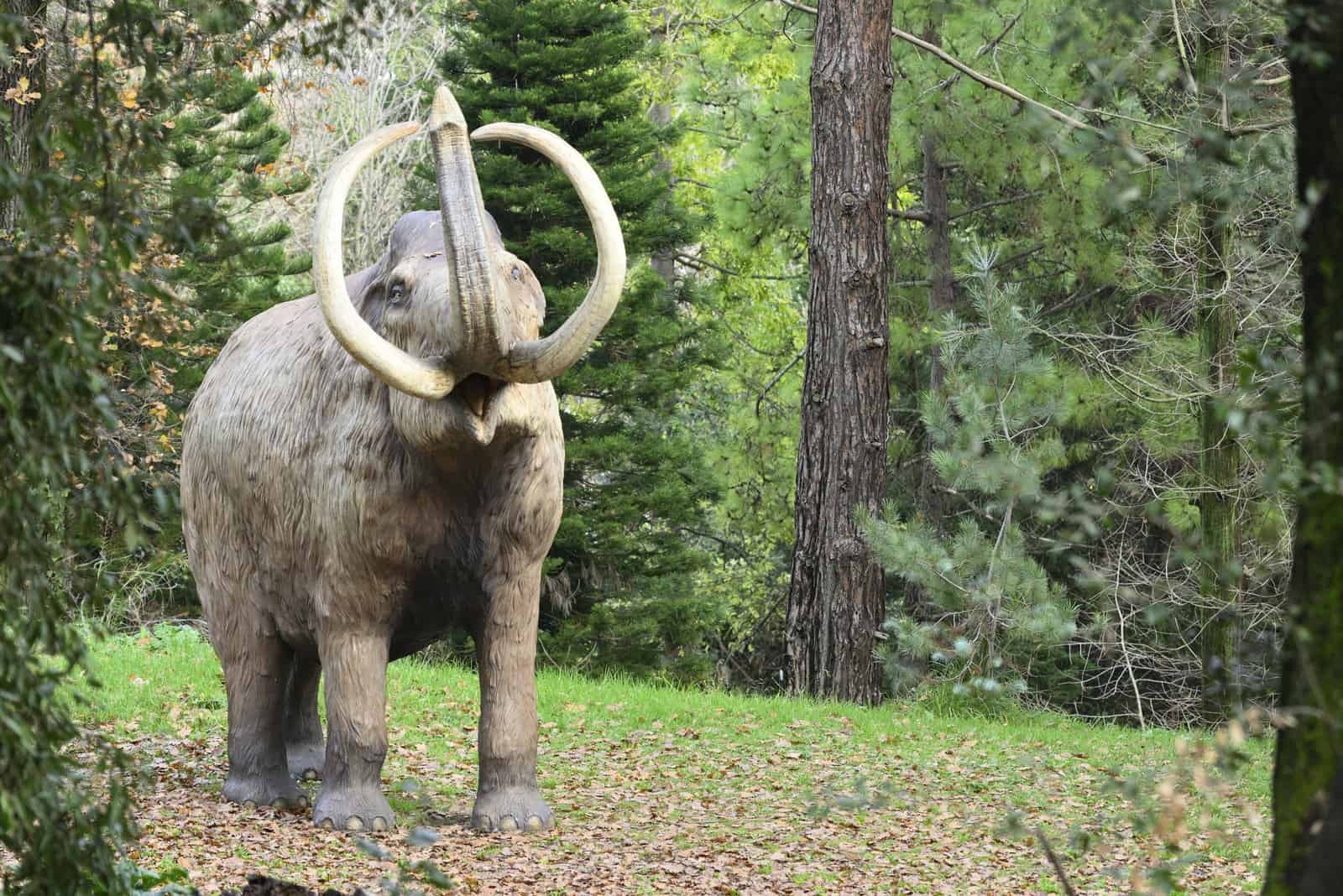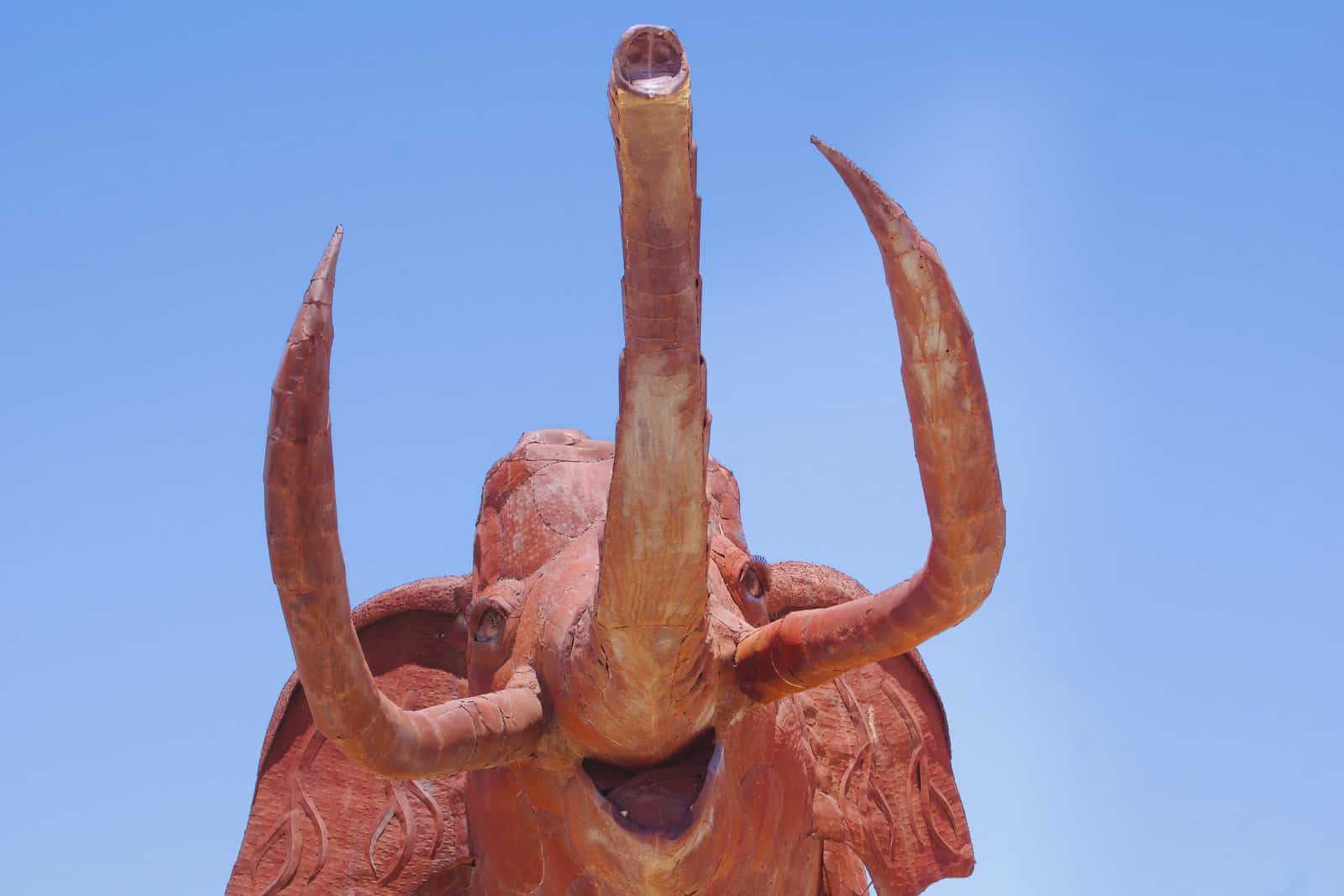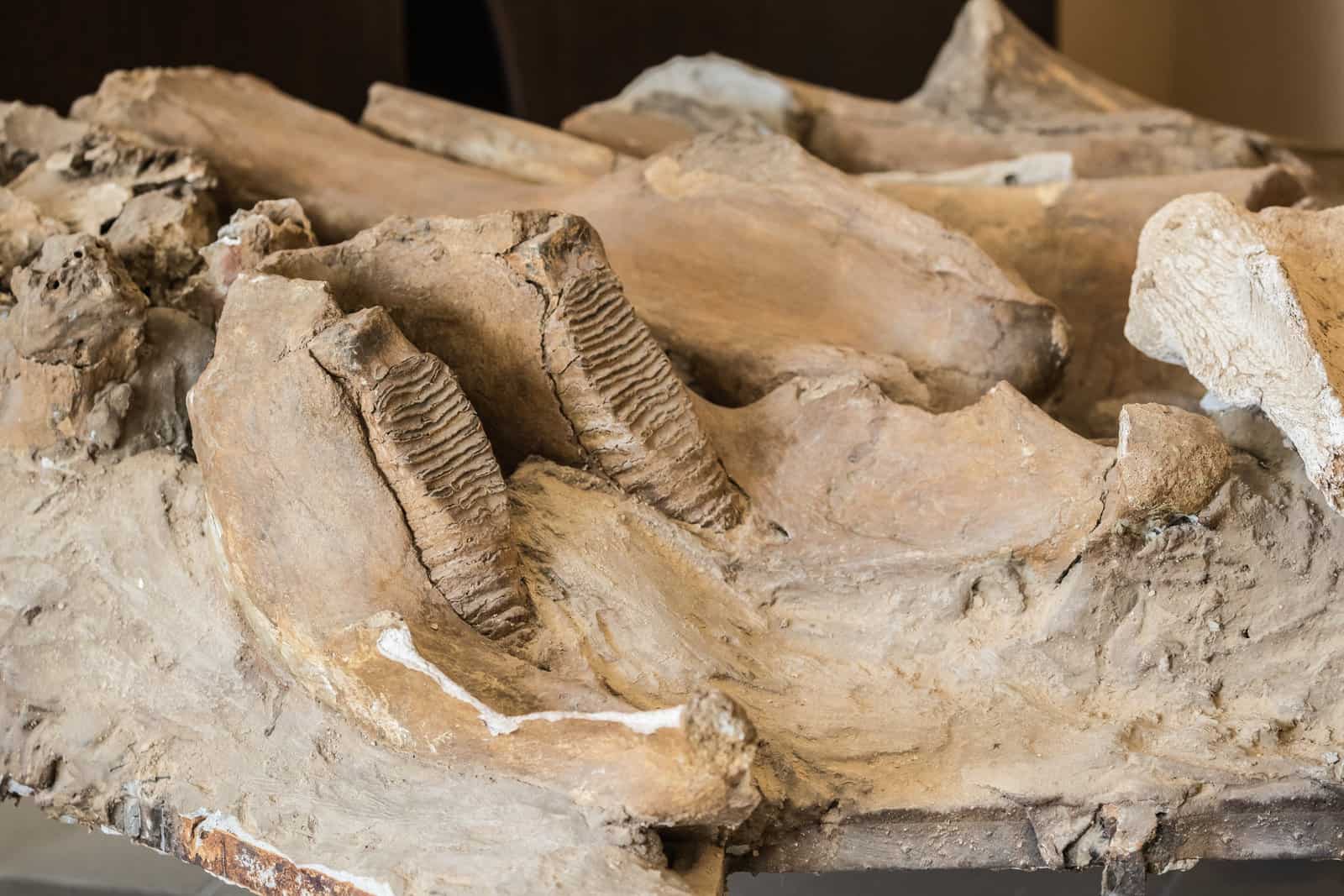
Mammoth: Stunning Facts for Kids about the Elephant’s Close Relative
Welcome to the second episode of our ice age article series, the one inspired by the American, now 20-year-old animated film franchise Ice Age. In this series, we discuss many elements related to the ice age as a geological period of Earth’s history as well as some of the animals that used to live during it.
In our first episode, which you can read here, we discussed how the ice age happened and how long it lasted. We learned that the Earth has gone through five major ice ages separated by periods of warm climates. Then we learned some facts about the people who have made it through one of these ice ages, the Eskimo, and why their name was later changed to the Inuit.
After that, we tackled, yet in brief, three prehistoric animals that both starred in the films and did thrive during the ice age, Sid, Manny, and Diego or the ground sloth, the mammoth, and the smilodon.
In this article and the following one, we are addressing these three prehistoric animals thoroughly to learn more about their long, long survival and what eventually caused them to go extinct.
So without any further due, let’s get started with our first ice age giant, Manny, or the mammoth.

What is the mammoth, to begin with?
A mammoth is a giant mammal that looks so much like an elephant. In fact, the mammoth and the elephant are somewhat relatives. They both descended from the same prehistoric ancestor about six million years ago. After that, they separated and each evolved independently.
Like its relative, the mammoth had a large body, two long, strong, curved tusks, and a giant muscular trunk. But unlike the elephant’s super large, fan-like ears, the mammoth’s were way smaller. Besides, the mammoth’s body was covered with long, brown, shaggy hair.
From its fossil records, scientists could estimate that the mammoth appeared on Earth around five million years ago. Unlike the dinosaurs that went extinct 65 million years ago, the mammoth used to live on Earth until much recently and it only disappeared about 3,500 years ago.
Where did the mammoth live?
Since the mammoth survived on Earth for as long as approximately five million years, it makes sense to think that it wandered around and explored the planet.
Well, that is actually correct.
Scientists believe that mammoths first appeared in Africa. They lived there for around two million years then they moved north to Europe and east to Asia. So you may think of that African mammoth as the great-grandfather from which all the other mammoths emerged.
Generation after generation, mammoths reproduced, adapted to their new habitats, evolved, and populated all three continents. Then, around 1.5 million years ago, they immigrated from Asia to North America by crossing the Bering Land Bridge that connected both continents.
How many species of mammoths were there?
Living in all these different places with diverse environmental and climatic conditions gave a chance for a lot of evolution to happen. As a result, many new mammoth species emerged. Although they did not look very different from one another, each of these species did have unique characteristics that were missing in the others.
Scientists could name 10 different mammoth species based on the fossil they found. Interestingly, these species barely, if never, co-existed. That means, as a new species evolved somewhere, its ancestor had either gone extinct or was about to.
The first mammoth species, as mentioned, appeared in Africa about five million years ago. It used to live in what is now Ethiopia, Kenya, Tanzania, Uganda, and South Africa and was called the South African mammoth.
Two million years later, the African mammoth emerged from the South African mammoth. It was relatively smaller and used to live in North Africa, where scientists found its fossils.
The African mammoth thrived for around 1.35 million years. Before it went extinct, a species diverged from it and moved to Europe and Asia. This new species was called the Southern mammoth.
The steppe mammoth evolved from the Southern mammoth around 2 -1.5 million years ago. It lived in Europe and China and was the most giant mammoth of all that existed on our planet. The steppe mammoth was 4.3 m tall at the shoulders and weighed up to 9.1 tons!
At some point in history, the steppe mammoth decided to cross the Bering Strait and moved to North America. There, it evolved into a new species that scientists called the Columbian mammoth. The Columbian mammoth used to live in what is now the United States and Mexico.
From the Columbian mammoth descended the pygmy mammoth. That was a dwarf species, well, the smallest of them all. It was only 1.72 m tall at the shoulders and weighed only 760 kg. Compared to its ancestor, the steppe mammoth, the pygmy mammoth was only 8.35% its weight and 40% as tall!
The remaining steppe mammoths in Asia moved to Siberia, Russia and evolved into the woolly mammoth. This is the most well-known mammoth species humans are familiar with.
So, all in all, the most known mammoth species can be organised as follows:
- The South African mammoth was the first to appear. It lived in South and East Africa.
- The African mammoth evolved from the South African mammoth and lived in North Africa.
- The Southern mammoth descended from the African mammoth and lived in Europe and Asia.
- The steppe mammoth was a Southern mammoth descendant and lived in Asia.
- The woolly mammoth descended from the steppe mammoth and lived in Siberia.
- The Columbian mammoth emerged from the steppe mammoth that lived in North America.
- The pygmy mammoth evolved from the Columbian mammoth and lived in the USA.

When was the first mammoth fossil discovered?
Well, that is debatable.
It seems like the mammoth’s tusks were already well known in Siberia, Russia, long before the 18th century. At the time, the local people used to find them, the tusks, as well as other mammoth bones and even complete skeletons on river banks.
Having no idea which animal these bones belonged to, the locals thought it was some kind of a super large underground ‘rodent’ that apparently froze after it came up to the surface.
Then, at the end of the 18th century, the first mammoth fossil, later named the woolly mammoth species, was discovered in Europe. When German Scientist Johann Frederich Blumenback saw them, he could see how much they resembled the Asian elephant. So he named the fossils Elephas primigenius, which means the first-born elephant.
And then more fossil findings continued.
In Siberia, the locals called the fossils mammon’s horn. When they were introduced to Europe, they were called the elephant’s tooth. So you may think of ‘mammoth’ as a combination of those two names, which all refer to the animal’s large curvy tusks anyway.

What did the mammoth look like?
You can pretty much consider the mammoth as a hairy elephant on a diet.
As we have mentioned above, many mammoth species had different body measurements. But in general, most of them were between 2.5 and 3 metres tall at the shoulders and weighed 5 metric tons at maximum. The most giant mammoth ever discovered measured 4 metres tall at the shoulders and weighed up to 8 metric tons.
Like modern-day elephants, male and female mammoths had tusks. At a young age, the tusks were small and temporary, like kids’ milk teeth. Then at some point, these baby tusks were replaced by permanent ones that grew to 4.5 metres.
The mammoth also had a long trunk which it used to eat, drink, and shower.
Scientists believe mammoths used to live in female-led communities, just like elephants too. Females, called cows, were in charge of bringing up their calves, while males, the bulls, were most probably solitary.
What did the mammoth eat?
Mammoths were herbivores. That means they fed on plants. But since they lived on different continents, the type of plants each species fed on was different. These types ranged from grass, shrub, and herbs to flowers, fungi, and forbes.
Interestingly, scientists could reveal that by examining the mammoth teeth.
How did the mammoth go extinct?
For a long time, scientists could not know what went wrong and caused the global mammoth population to vanish. To be more precise, scientists could not attribute the mammoth’s extinction to only one reason. They do believe that many factors might have caused the giant to disappear.
What scientists were sure about, however, is that mammoths did not disappear altogether at the same time. But their numbers continuously declined for about 6,000 years until the last mammoth disappeared about 3500 years ago.
A study conducted in 2021 concluded that the following reasons contributed to the mammoth’s extinction.
The first of these reasons is climate change. As we have said earlier, mammoths lived throughout the ice age, so they were well adapted to the freezing weather. When the Earth started getting warmer again, the ice melted, and the sea levels increased. This affected the availability of food and destroyed the habitat where mammoths thrived. As a result, the mammoth numbers started to drop.
There is also the theory of mammoths being hunted, in large numbers, by humans. To some, this may sound odd since mammoths were super giant and probably used their long sharp, twisted tusks to defend themselves.
But the notion that humans at that time depended mainly on hunting for survival, which means they must have been really good at it, may somehow support the hunting claim. And scientists did find several mammoth bones in old human sites and caves.
The Woolly Mammoth
Like the T-Rex dinosaur being the most famous, the woolly mammoth is the most famous species among the 10 named. And Manny from the Ice Age film series was a woolly mammoth.
The woolly mammoth was the last mammoth species to go extinct. It used to live in Asia after it diverged from the European/Asian mammoth, the steppe mammoth, around 800,000 years ago.
Appearance
Scientists could depict with a relatively good level of accuracy what the woolly mammoth looked like because they could find several of its skeletons not just complete but pretty much well preserved too.
After examining the skeletons, scientists concluded that the woolly mammoth looked more like the African elephant than the Asian one. Males measured 2.7 to 3.4 metres tall at the shoulders while females were shorter than that, only about 2.6 to 2.9 m tall. Males were also heavier, weighing up to 6 metric tons, while females’ maximum weight was 4 tons.
A male woolly mammoth had a pair of long curvy tusks that measured 2.55 m and weighed 45 kg on average. On the other hand, females’ tusks were only 1.65 m long on average and weighed just 9 kg.
As previously mentioned, the woolly mammoth was named after its distinct two-layer brown shaggy fur. The undercoat was 2.5 cm long and the outer coat grew to 70 cm long. No wonder this giant survived the ice age!
It was not just the fur that protected the woolly mammoth from the cold. The skin under that fur was as thick as 2.5 cm at maximum, below which was a 10 cm thick layer of fat that kept the mammal warm and supported it when food was scarce. The woolly mammoth’s ears were small and its tail was short to prevent heat loss.
The woolly mammoth also had a hump, just like that of a camel. It worked like a pantry where food was stored to help the mammoth survive when food was not abundant.
Based on its size and how its tusks and bones developed, scientists could estimate that the woolly mammoth lived up to 60 years.
Conclusion
And here comes the end of today’s journey, in which we explored another famous extinct animal and one that survived the ice age, the mammoth.
In this article, we learned when the mammoth first appeared on Earth and how it spread from Africa to Asia, Europe, and even North America. We learned that the different mammoth species diverged from one another and survived for millions of years on these four continents.
Then we moved to the discovery of the first mammoth fossil, what it was thought of at the beginning, and how it received the name mammoth. When they studied these fossils, scientists were able to reimagine what the mammoth looked like and learn a lot about its survival behaviours.
After that, we discussed scientists’ hypotheses for why the mammoth went extinct. From climate change to human hunting, the mammoth is believed to have disappeared around 1500 years ago, which is relatively recent compared to other prehistoric animals.
Last but not least, we demonstrated some interesting facts about the most famous mammoth species, the woolly mammoth, which is more connected to human culture being the last one to go extinct.
If you enjoyed learning about this facinating animal why not check out more fantastic facts about other animals: Koalas, Land Animals, Sharks, Raccoons, Moon and Sun Bears, Rats, Chickens, Cats, Pandas, Monkeys and Whales.
Why not subscribe to our LearningMole Library for as little as £1.99 per month to access over 1000 fun educational videos.


Leave a Reply